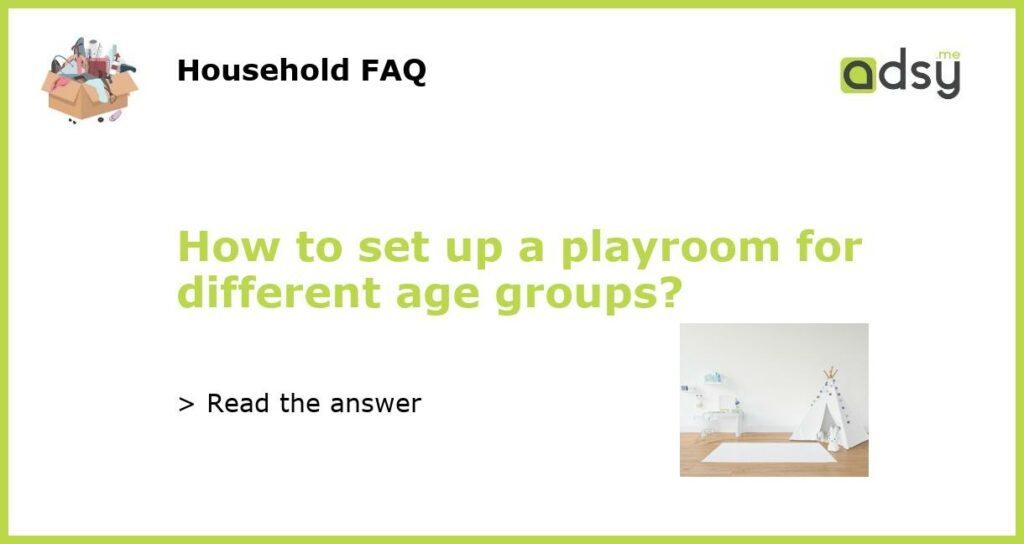How to Set Up a Playroom for Different Age Groups
Creating a playroom that caters to different age groups can be a fun and rewarding project. It allows children of different ages to engage in play that’s both safe and developmentally appropriate. In this article, we’ll outline some tips and ideas for setting up a playroom that can accommodate various age groups.
Consider the Different Needs
When setting up a playroom for different age groups, it’s important to consider the unique needs and interests of each age group. For example, infants and toddlers require soft flooring and age-appropriate toys that stimulate their senses and aid in their development. Older children, on the other hand, may require more space for physical activities and age-appropriate toys that encourage creativity and problem-solving skills.
Separate Play Areas
To cater to different age groups, consider dividing the playroom into separate areas. This allows each age group to have their own designated play space with activities and toys that are suitable for their developmental stage. For instance, you can have a separate area for infants and toddlers with soft mats and age-appropriate toys such as stuffed animals and sensory toys. In another area, you can set up a play kitchen and art center for older children to engage in imaginative play.
Provide Age-Appropriate Toys and Activities
In order to cater to different age groups, it’s important to provide toys and activities that are suitable for each age group. This means considering the developmental stages of the children using the playroom and selecting toys that align with those stages. For example, for infants and toddlers, you can include soft toys, teething rings, and rattles. For older children, you can include puzzles, board games, building blocks, and art supplies. By providing age-appropriate toys and activities, you ensure that each child can engage in play that is both safe and stimulating.
Create a Safe Environment
Safety should be a top priority when setting up a playroom for different age groups. Make sure the play area is childproofed and free from hazards such as sharp edges, choking hazards, and unstable furniture. Use appropriate safety measures such as outlet covers, safety gates, and furniture anchors. Additionally, ensure that the playroom is well-lit and adequately ventilated to create a comfortable and safe environment for all age groups.
Encourage Structured and Unstructured Play
In addition to providing age-appropriate toys and activities, it’s important to encourage both structured and unstructured play. Structured play involves activities with specific rules or guidelines, such as board games or organized crafts. Unstructured play, on the other hand, allows children to engage in open-ended play and use their imagination. By providing opportunities for both types of play, you encourage the development of different skills and cater to the varying needs and preferences of each age group.
By considering the different needs of each age group, providing age-appropriate toys and activities, creating a safe environment, and encouraging both structured and unstructured play, you can set up a playroom that accommodates different age groups. This allows children to engage in play that is both enjoyable and beneficial for their development.

